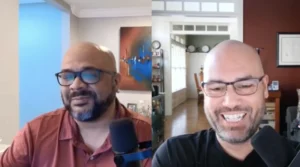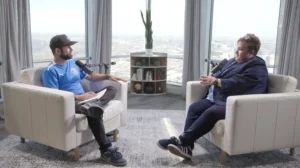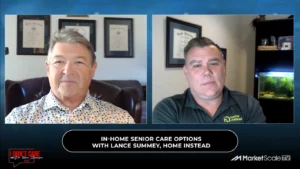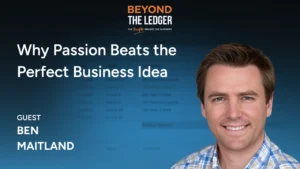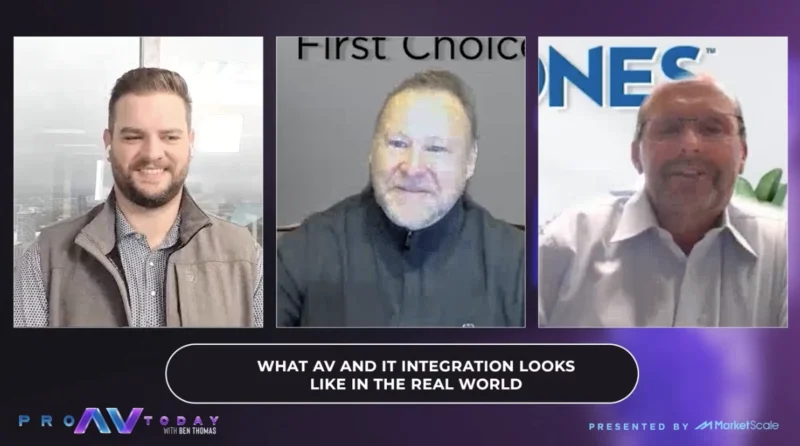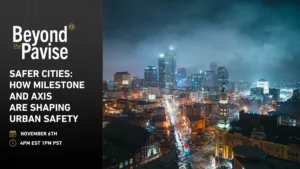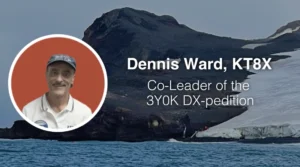Reinventing AV Furniture from the Ground Up with Scott Srolis of Salamander Designs
The needs of furniture evolve on a seemingly daily basis. Watch as Pro AV Today host Ben Thomas and Scott Srolis of Salamander Designs break down the role of furniture in modern day AV design.
Watch the full interview below.
* Transcript is auto-generated
BT: Hey, everybody, welcome back to pro AV. Today, you know, the exciting thing about today’s office and work landscape is that the aesthetic and the functionality of the room is almost equally as important. Right? in previous days, maybe it was 75 to 25 where, you know, where we were focused on the technology and a little bit less on the aesthetics and design. But, you know, especially as we move into trends about meeting equity and inclusion, things like that, you know, that’s driving a lot more of the purchasing decisions these days. And somebody that has that conversation on a daily basis is my next guest. Scott stroll is over at salamander designs. Scott, Thanks so much for hopping on pro AV today.
SS: Absolutely Thanks for having me.
BT: You know, Scott, as I mentioned kind of briefly, the landscape of functional design, especially when you’re talking about meeting rooms and workspaces and things like that, the demand and the ask from the customer has changed to where it used to kind of be a technology first. And now you’re seeing a little bit more parity between the functional aesthetic design, but also obviously the practical, technical, technical side. You know, talk to me about how that’s really changed over the last 5 to 10 years. And, you know, specifically in the furniture design space.
SS: Yeah so, you know, at salamander designs, we design all of our designs are basically focused on elements that integrate, beautiful, fit and finish with utility and usefulness for technology. And what we’ve seen as the modern workplace has evolved over the last five years, specifically was video conferencing coming in to play in an important way. But really, if you go back three, four or five years ago, it was more c-suite and less huddle spaces or the more everyday meeting, office spaces. It was catch as catch can. Not a lot of enterprise users had standards and the technology was really being pressed. Right so, you know, from an infrastructure standpoint, did they have the right infrastructure and networking to be able to handle video conferencing? And then if you go back just 2017 and you read what the future is said around the video conferencing spaces, they said by 2030, we would have over 90% adoption of video conferencing spaces in large enterprise. Now, with the pandemic, it truly accelerated that to where today were 90, 95% But as opposed to being some new technology, technology like holograms, it’s the same technology that we had three or four years ago displays, soundbar, cameras, codecs, microphones, things like this. So it’s really created. A pretty significant demand on the entire room, furniture and technology coming together to create that one solution that works together that’s easily deployable and repeatable for large enterprise customers.
BT: Well, what’s interesting is that, you know, obviously with the pandemic accelerating, a lot of those conferencing and collaboration tools, one of the things that spawned naturally out of it was this idea of meeting equity media and meeting inclusion, which isn’t really something that was at scale, talked about pre-pandemic. People were kind of OK with the box in the corner because that’s what they were comfortable with. But now we have companies like Microsoft front row jumping in and completely changing how we perceive that. But one of the things that I love about salamander specifically, and we’ve had this conversation at infocomm is, you know, you guys actually enable in a lot of ways focus on that meeting equity, that meeting inclusion, whether it’s from a product design standpoint or a material standpoint. You know, talk to me about how that informs the product design process for you guys.
SS: Well, it’s everything, whether it’s equity for remote and in-room participants, being all being able to see each other with the right shape top, you know, a trapezoid type top would be best where people fan out. So everyone’s on camera and you’re not looking over the other person’s shoulder so everyone can see each other. And that drives its way all the way through to the height adjustability that we have in our products for ADA compliance. You know, in everything that we do, there’s inclusion and equity. You know, whether you’re using an all in one collaborative board, like a Microsoft Surface Hub as example, and you need to be able to annotate no matter your size, whether you’re six, seven or five one, you want to have that height adjustability. We think about that and the ergonomics associated with that, or if you’re in a wheelchair and you need to be able to also annotate, we think about that as well. And how we can have our products fit inside the American Disabilities Act. So the inclusion comes not only from equities when it comes to meeting equity and for collaboration, but also utility and usefulness with collaboration all in one board’s like a service sub, as example. And as we design our furniture, we, we, we want is we get a lot of information from our, our stakeholders. So whether it’s end users, architects, designers, you know, we really want to understand what’s happening in the meeting space and then try to make product that’s innervated to make it so that it’s a seamless transition. So if you’re a remote user, you don’t feel like a second class citizen. You know, four or five years ago you may because you weren’t in the room. Right but now everyone needs to feel as though they’re in the room, even if they’re not in the room. So we really take that into consideration in building our current set of products that we have as we’ve recently launched some new products at infocom that you saw or in our future product roadmap.
BT: Well, one of the things that I find really interesting, too, and this applies a little bit more to the tangential and peripheral markets, you know, an av, whether that’s the hospitality’s, the health care, even the education side is, you know, a lot of times when you’re talking about those end users and the people that are typically utilizing that space is they may be a little bit less familiar with what I’ll call some of the traditional framing meeting concepts, things like that, where the audio intelligibility, they may be turned around trying to hear or they may be in a weird spot on screen. You know, I think one of the things that you guys have done a really good job of is making it almost foolproof, right to where you guys not only, you know, when we talk about the materials that you guys build with helping make sure that people are lit properly, right, making sure that people actually are sitting in a correct place. Those things are important, especially as you branch out into some of those nontraditional AV markets. Talk about those markets a little bit for just a second. How important are those markets and how important are those end users to you guys on the design and the design process?
SS: Oh, well, I mean, it’s very important. You know, when we look at curating to your point, when we’re looking at curating what the right color is for top of a surface, for a table, we want to have something that doesn’t reflect a lot of light, you know, and then really go through the testing to ensure that you’re going to have the best on camera experience, you know, regardless of where you’re sitting, when you’re in the room. As far as when you look at hospitality or health care or any one of these verticals, they all have the same unique issue, which is how do we get more conferencing areas done quickly? And one of the things that we do at salamander, especially with our integrated. Cadenzas, meaning that the displays integrate to the credenza. It makes it. It’s the easy button for hanging a display and getting video conferencing set up in any meeting space quickly. So it’s not what you have to do. It’s what you don’t have to do. You don’t have to have blocking and conduit in the wall. You don’t have to relocate power and network connectivity from 18 inches to behind the display. So when you have a install that’s really, really simple, that’s on wash, rinse, repeat, it can be done in that repeatable fashion over and over again to really save the end users time and money, time and money on the deployment and the construction side. And then a two man crew can get a whole conference space set up in less than a day. And we’re finding that that’s really important to those clients right now, is being able to move quickly and deploy these video conferencing spaces as fast as possible.
BT: Well, we talk about, obviously, those markets, health care, hospitality, education, really, and more. You know, when we think about some of those emerging markets, another one that comes to mind a little bit is the residential side. And obviously residential AV has been part of the industry for a while. But there’s been this resurgence in the post-pandemic world and even obviously during covid, where people decided to reinvest in in-home technology or new features and tools, things like that. And look, whether that’s a fully integrated house, whether that’s a media room, heck, even a golf simulator, outdoor living, things like that. There’s been this new kind of revitalized demand for meaningful aesthetics and connectivity and practicality in the residential space. Talk a little bit about that. I know that’s a line that you guys toe pretty regularly going into that residential side.
SS: Yeah so on the residential side of the business, we have seen new technology like the ultra short throw cadenzas that we have various partners that manufacture and we have worked with them to design cadenzas where the projector recesses in to the projector, where the projector recesses into the credenza to create a seamless solution that looks great and also is again, like everything else that we do at salamander is designed to support the technology. But as much as New technology is great and driving a lot of the home entertainment, like you mentioned, a golf simulator, things like that, we’re finding a lot of people who are listening to music again. A lot of people are buying turntables, a lot of people are buying audio racks. And we make these heavy duty pull out shelves. It’s perfect for their turntables and a whole different assortment of audio racks to really show off the gear and make not only the furniture around. The gear look beautiful in the home, but also the electronics as well. So we’re seeing a lot of the theaters come to life, but also those two channel audio systems are not going anywhere quickly.
BT: Well, look, I’ve got a we’ll call it a half integrated house, but I’ve got speakers everywhere and my wife is tired of be buying TVs and speakers. That’s what you get when you marry an AV guy, though. But it’s true. It’s a challenge for her for sure. But, you know, one of the things, Scott, I think that’s unique and is, you know, you guys live in a world that’s very aesthetic, heavy and very design and very practical. But the challenge can be sometimes the trends, the trends change, the preferences change, the aesthetic trends will also change. You know, how do you keep up with that from a salamander perspective? Obviously, you want to be up to date on the new trends, but you also want to be practical. How do you guys deal with some of those changing consumer demands?
SS: Well, you know, it’s different for commercial and residential. There’s some similarities, you know, as far as our design portfolio, you know, so so part of it is, is you look at what the needs are for the particular customer. And that’s probably the easiest way because what I’ll share with you on the commercial side, Black and white is 80% of the time, you know, and and that doesn’t truly answer the question, but that’s what drives what people look at is when they’re looking at a portfolio on the residential side of the business, it’s Black glass and Black oak 80% of the time. And then we have our curated portfolio that fills in all those different styles that you can choose from. You know, when it comes to product roadmap and keeping up with the trends, you know, we have a gentleman here named Salvatore cava, who’s not only our founder, president, but also our head designer. And Sal keeps up on the trends, keeps us focused on what the next thing is going to be. And make sure to attend all the appropriate shows working within the design community and all those types of things, you know. So as example, a few years ago, barn bored oak was incredibly trendy. Two years before a barn bought was really, really trendy. We were already had it on the product roadmap based on Sal and his influence in the design community. So a lot of that work comes from some sales experience and then bringing it to us along with what we hear from our customers and what they need and want. Well, let’s talk about that creative stuff for a second. I love that you brought that up because one of the things that AV historically has had a bit of a challenge on is we want to lean towards the technical, we want to lean towards the engineering side. And sometimes we just frankly let the creativity go by the wayside.
BT: Right and, you know, I had a chance to meet actually with one of the companies that you guys do a lot of work with, a company called modus vr, who’s really aiming to change the way that design is done. And, you know, we’ll talk about that for a second. What does actual physical design, whether that’s, you know, updating fixtures, finishes, things like that, you know, now that it’s a little bit more easier, whether it’s VR or whether it’s CAD tools, whatever, you know, is that something that you’re seeing a lot more demand for, a lot more, maybe even in customers designing systems and having ideas before they even come to you?
SS: Yes so speaking of modus VR specifically, they’ve been a great partner to salamander and we utilize the platform quite often for exactly what you’re speaking about. You know, earlier in this conversation we were talking about the demand skyrocketing for video conferencing spaces, and there’s a lot of retrofitting going on in those spaces. And it’s kind of the wild, Wild West where, you know, a large enterprise client, they’re trying to figure out what the right, you know, just what the right layout is for the room. What is the right technology for the room? Well, if you go and bring all the hardware in and try to set up a up, that takes a long time. You can go into modus and have it done in minutes, you know. And case in point, our director of sales, Christa scotto, is having a. Conversation with a fortune 20 company. And I had come into the meeting as it had already started, and I was just sitting there and I was listening and they were just they were talking about things like, oh, well, you know, how do we want to re-orientate the space? Where does the microphone go? Where does it put the camera? Should it be above or below the screen or in another location. So that, you know, you have the best remote experience so that people don’t feel inferior when they’re at the coffee shop or at the home office? And then again, as we talked earlier, and the people in the room have to have the best experience communicating with the folks that are remote. And they were having this infighting where everyone had a different idea. No way it happened because we all have our ideas of what we think it’s going to work. So I’m sitting there, I was kind of quiet and because I had walked in mid-stream and I said, you know, there’s this great tool called modus VR. And I explain to them what it is and how it could potentially help them solve some of their issues and get them on the same page. As far as alignment goes, a week to 10 days later, Chris and can from modus had a collaborative session with the client. And within a half hour they not only figured out what they wanted to do for that room, they figured out that they want to continue to use the tool for future rooms and they landed on some salamander specs using modus to help drive that result. So I’m a big fan of using those digital tools and making it easier on clients to make decisions a lot faster and gain that alignment.
BT: Look it by no means is this an ad for modus VR. There are a number of great design firms out and in the AV space, but you’re right, having access to some of these digital tools, it shortens the buying process and makes the end user and the designer feel more involved in the process. And it gives a chance to show those people who have the bad ideas how wrong they are.
SS: On that same note, we have been developing our own suite of digital tools to reduce friction in the buying process and, and the design process we launched in February. 2021, a new seating designer for residential custom seating. That’s on our website that you can go ahead and play with different layouts, see different materials in real time. And then this past info.com, we launched our cabinet designer for commercial, where you can build a credenza integrated with everything you’ll need for Avi, including single dual displays integrated to the credenza, you know, Avi racking shelving hospitality kits for trash recycle and really develop and design a cabinet that you’ll need for that use case, including seeing 3D models of it and line elevations. The coolest thing is the customer can do it all themselves. And at the end if they’re a reseller salamander, they get their reseller price, they get the lowest price they can save and share the design with a beautiful output document and then communicate right back to salamander in the platform. If they have any questions, they need design help or they would just like an official quote with freight. Right and we’re seeing a large adoption of resellers, designers using this tool. Now, it’s actually blowing me away. How many people are using it on a weekly basis? I had the number a little smaller than where we currently are, but it’s growing really fast and we love to see that look. It’s great. You’re exactly right. It’s great to see people leveraging some of these digital tools to really empower themselves and to make some of these purchasing decisions.
BT: Scott, I’ll give you the last word here. If the crystal ball in front of you, we could rub it and pretend that we can actually read the tea leaves here. But, you know, what’s the next five, 10 years for functional furniture salamander look like for you guys?
SS: You know we have a. A pretty. Pretty significant road map right now where we’re looking at really it’s on the lines of what we currently do. So it’s an evolution, not a revolution. You know, the technology needs to change for the evolution to happen. You know, and there’s some things I can’t talk about because we’re on we’re under NDA with our technology partners, you know, to kind of give you a fast, you know, five, 10 year look. But what I would say is in the immediate future, it’s really making the installation simple, the style beautiful and really repeatable with the right style, the right furniture for the space, the small space, large space, whatever happens to be, and ensuring that the materials that we use are not only premium, but they also work inside of the collaboration spaces. Now that is, you know. That’s where we are now. And it’s also where we have plans for the next 3 to 5 years, I think after five years. We’re going to see a dynamic change in the technology. And as that technology changes, sentiment will change with it.


